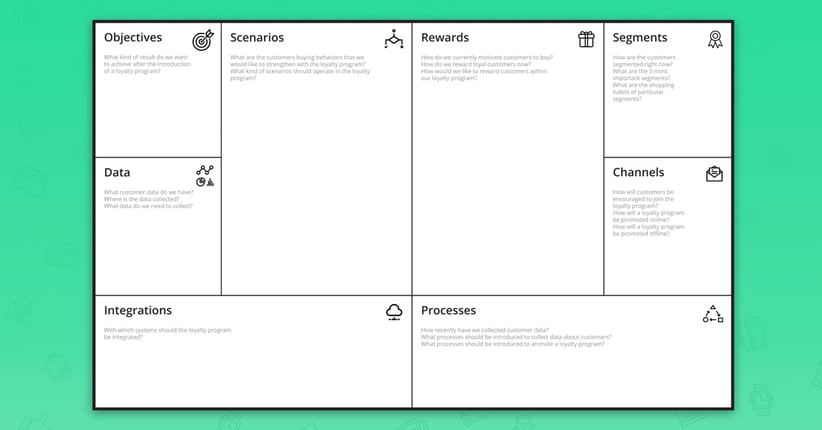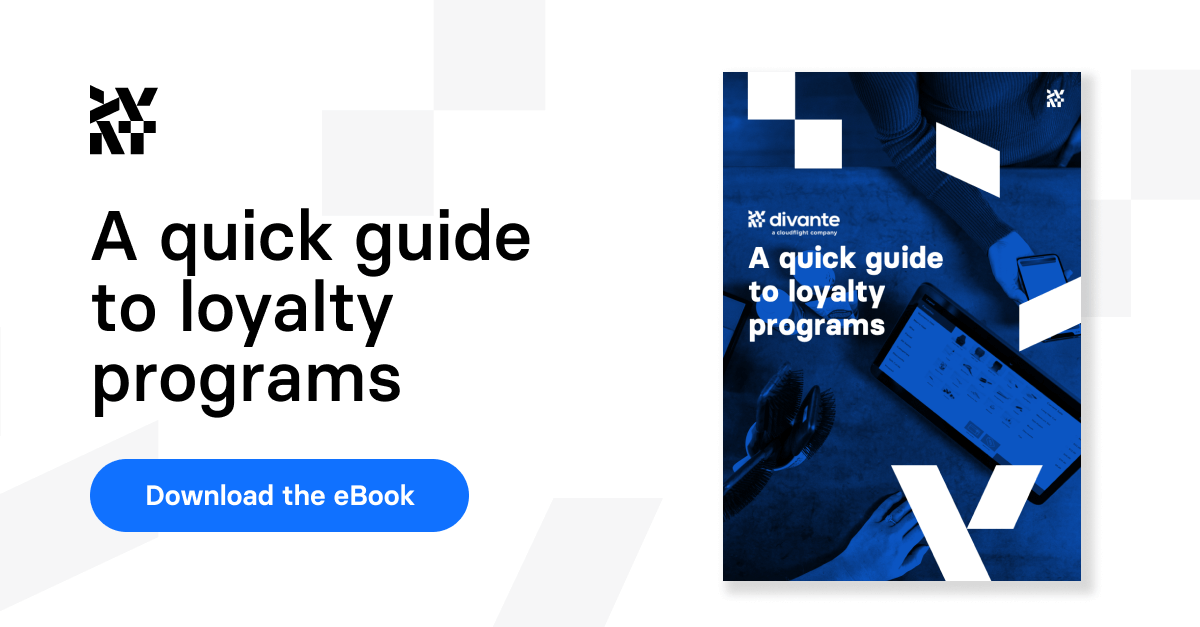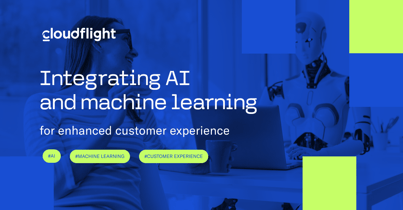Sometimes it’s hard to define how we can improve loyalty among our customers. That’s why we have developed a simple framework where you can clarify the needs and solutions to do so. Let me tell you why and how you could use it to design an astonishing and effective loyalty solution.
When I say loyalty solution, I’m not referring to the old-fashioned programs with plastic cards and incentives. These are a dime a dozen! There are thousands of unique types of loyalty solutions you could be using. I believe a loyalty solution may be applied every time there is an interaction between a company and their customers.
In some cases, customers are entirely unaware of loyalty programs running in the background. Meanwhile, the loyalty manager tracks the customer’s behavior, calculates the lifecycle of the customer and probability of a future purchase and distributes rewards, incentives or interacts with customers in different ways.
Omnichannel gap and difficulty in designing solutions are the reasons why we have decided to develop the tool for designing loyalty solution. It sounds obvious but loyalty solutions can be that missing piece in off-line and mobile touchpoints. After all, in a typical loyalty program, we can perform tasks like off-line customer registration during the purchase process, match the customer with a transaction or interact with the customer through product recommendations. In some cases, we can use mobile applications extremely effectively to give customers loyalty points for checking into specific off-line locations.
Here is how you can use our Loyalty Canvas to find a loyalty solution to best suit your needs:
Canvas overview
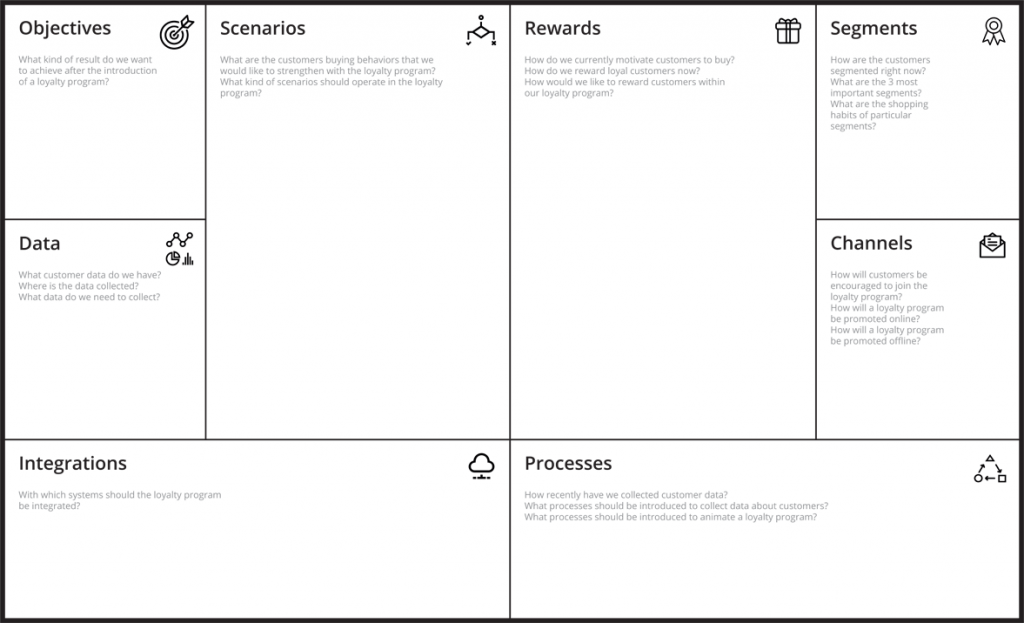
The Loyalty Canvas was developed based on our workshops and research in the Customer Experience department and was inspired by the Business Model Canvas developed by Strategizer. The idea of creating key components of the canvas – objectives, scenarios, and rewards is strongly connected with the habit loop. To learn more about this, read “The power of habit” by Charles Duhigg.
The Loyalty Canvas can be used for designing omnichannel solutions as well. You can add off-line touchpoints to improve the loyalty of your customers.

There are 8 areas to the canvas:
- Objectives
- Segments
- Data
- Scenarios
- Rewards
- Channels
- Integration
- Processes
Every area of the Loyalty Canvas touches specific parts of loyalty solutions. The main goal for every slot is to draw a direction for the loyalty solution and expose limitations and challenges we need to overcome, including technological difficulties.
Objectives
At the Objectives point, we need to confirm our business challenges by answering the question:
- What is our intended result after introducing a loyalty program?
Segments
Segments tell us different types of interest groups or how we can divide our customers. We ask the questions:
- How are the customers segmented right now?
- What are the 3 most important segments?
- What are the shopping habits of particular segments?
Data
In the Data section, we want to define what kind of data sources we have right now and what kind of data we need to start collecting if we want to implement our ideal loyalty program. It’s crucial for the applications where loyalty solutions need to react to the behavior of customers. We ask:
- What customer data do we have?
- Where is the data collected?
- What data do we need to collect?
Scenarios
To define Scenarios we ask questions like:
- Which buying behaviors are we strengthening through the customer loyalty program?
- What kind of scenarios should operate in the loyalty program?
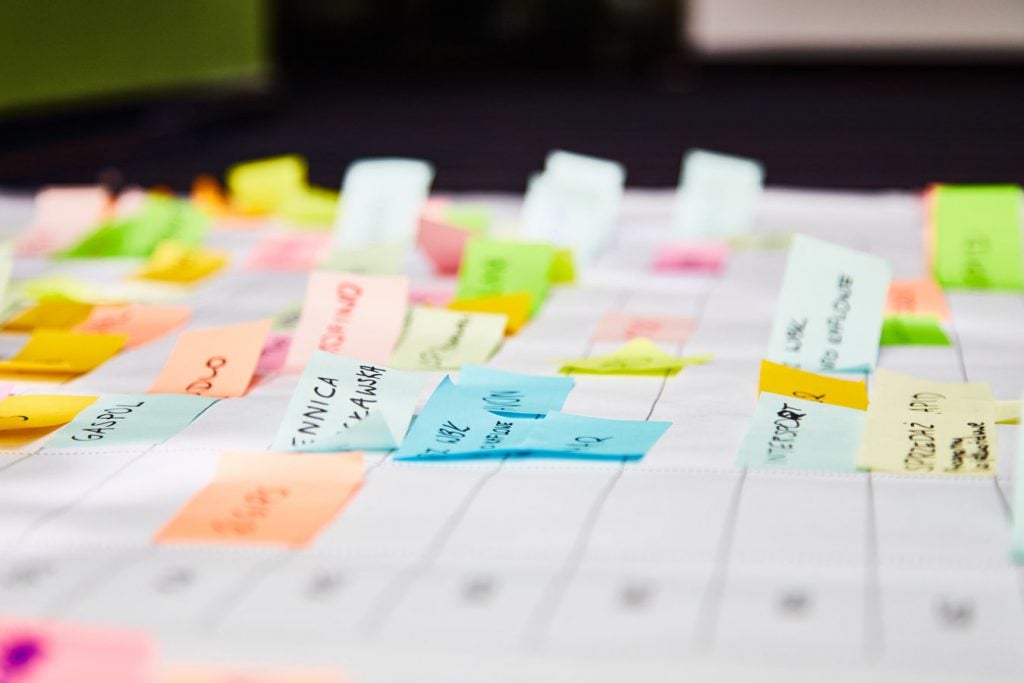
Well-defined scenarios are related to the behavior of the customers. These behaviors are beneficial and we want them to be more repeatable.
Segments
Different Segments can be motivated by many different types of Rewards. Here we ask:
- How do we currently motivate customers to buy?
- How do we reward loyal customers now?
- How would we like to reward customers within our loyalty program?
We try to connect Segments, Scenarios, and Rewards together which is why they are in together in the Loyalty Canvas.
Channels
In Channels, we point out how our loyalty solution will be exposed and communicated to potential users. We also try to define how marketing will be used to improve the effectiveness of our loyalty solution. We ask:
- How will customers be encouraged to join the loyalty program?
- How will a loyalty program be promoted online?
- How will a loyalty program be promoted offline?
Integration
To finish defining the shape of our loyalty solutions, we need to clarify our integration needs. We have to check which internal and external tools will be necessary to run the loyalty solution we just designed. We ask:
- With which systems should the loyalty program be integrated?
I personally believe that running the program as an MVP (minimum valuable product) is the best way to start.
Processes
Last but not least – processes. Here we cover all the processes that will be used to maintain a successful loyalty program. We ask:
- How recently have we collected customer data?
- What processes should be introduced to collect data about customers?
- What processes should be introduced to animate a loyalty program?
That’s all, simple but complete. I guarantee that if you type out answers to each paragraph you will be much closer to defining your loyalty solution.
Here you can download Loyalty Canvas.
Workshops
Here is how we do typical workshops using the Loyalty Canvas:
- Define objectives for the loyalty solution
- Define the current state of loyalty and what kind of assets we have to start with:
- Currently used segmentation
- Currently stored data
- Currently used scenarios and rewards – sometimes a business can have some kind of reward program without realizing it. We might, for example, already reward everyone who signs up for a newsletter. We can create a situation where the customer receives points after a number of purchases
- On-line and off-line communication processes which build loyalty
- Current communication – where and how are we talking about rewards for specific scenarios
- Pre Existing integrated programs and tools that should have a positive impact on loyalty behavior
- Defining segmentation needed to complete objectives
- Working on key components of loyalty solutions
- Scenarios – Identifying what kind of behavior we would like to intensify or play down among customers and defining them as scenarios to reward
- Rewards – defining what is valuable for customers, what can be useful, and rewarding or desirable for the customers. Converting those needs into rewards in the form of products (including material or coupon product, invitations to events, virtual products), cash-back, access to something like access to lifelong free delivery or actions like including customers to the exclusive group of the most important influencers
- Based on defined objectives, segments, scenarios and rewards we scan and fill the other slots
- While working – at this stage we used to perform brainstorming sessions
- Finally, we evaluate limitations of loyalty solutions
- The last step in our workshop is an evaluation of our newly created concept, confirm how as a customer from different segments can be processed in our loyalty solution and that everything fits. This part takes some time ?
- We finish the workshop but we give us and our Partner time to rethink the concept, update data and ideas. We used to organize call or shot meeting to conclude our commonly designed vision for loyalty solution and next steps to implement it (general direction, potential technology, first steps in organization etc.)
I hope that you will find Loyalty Canvas helpful and you design lots of great loyalty solutions.
Karol
Ps. If you have any suggestions on how we could improve Loyalty Canvas – just let me know!
Published April 19, 2018

